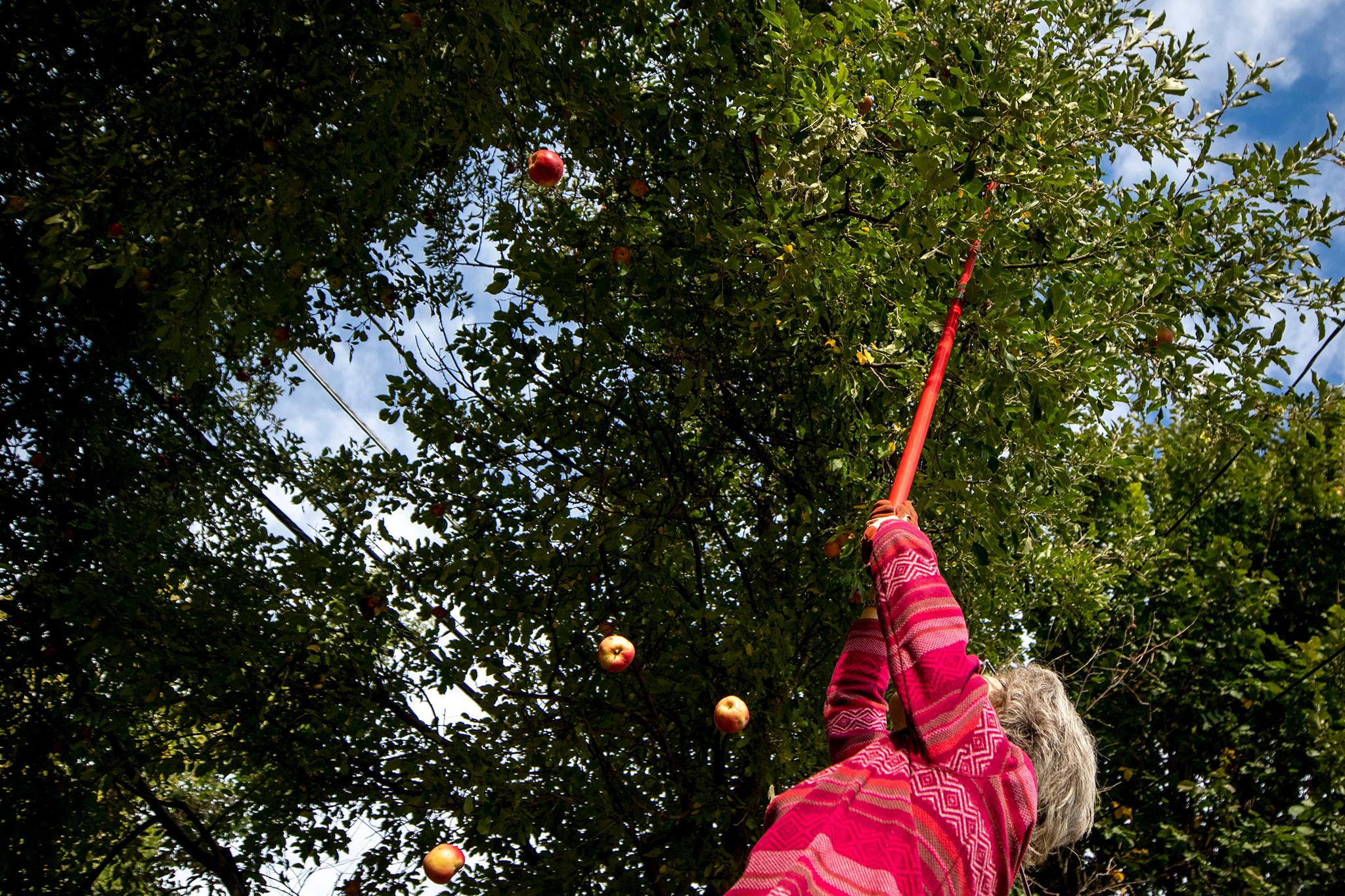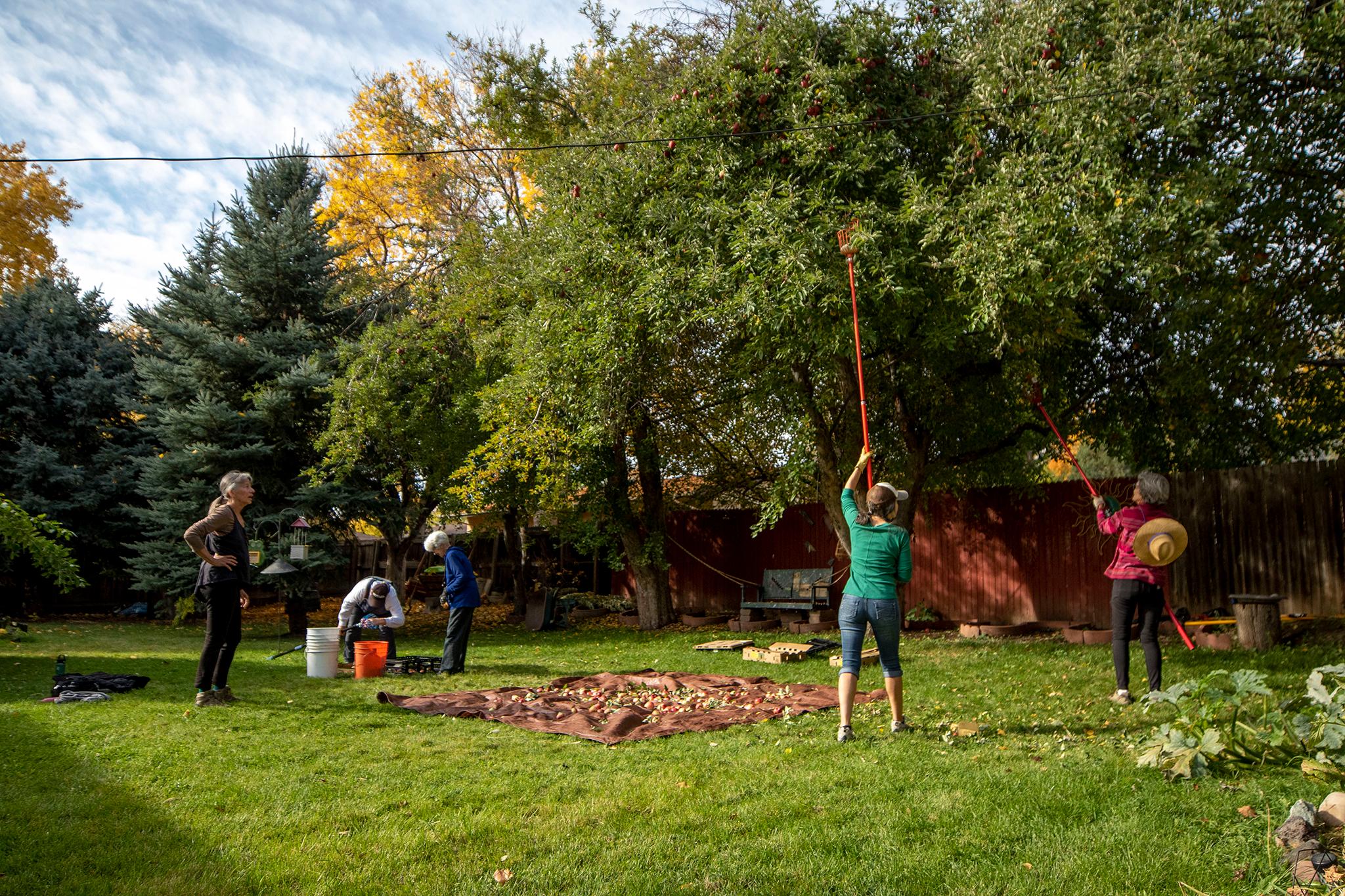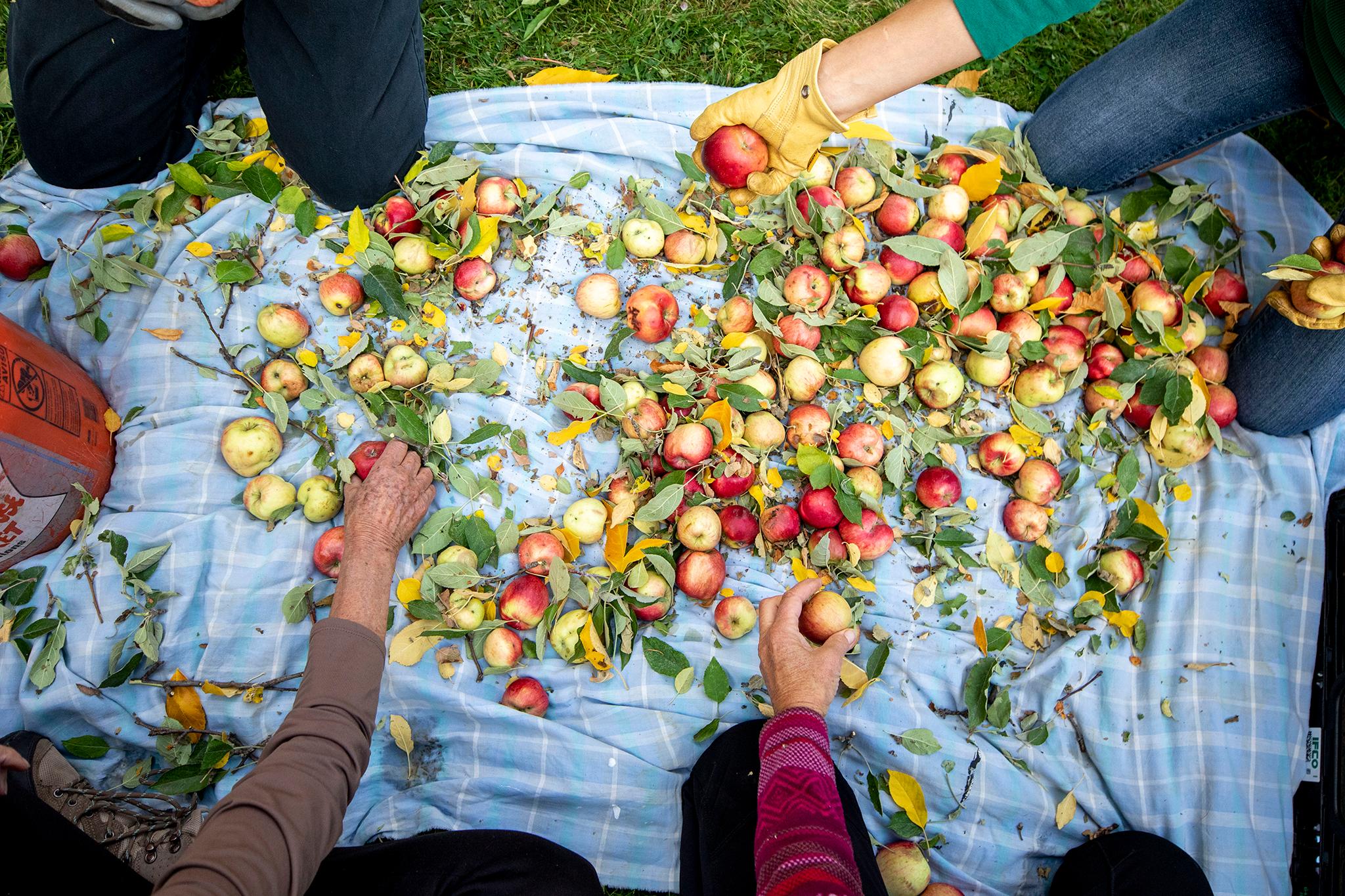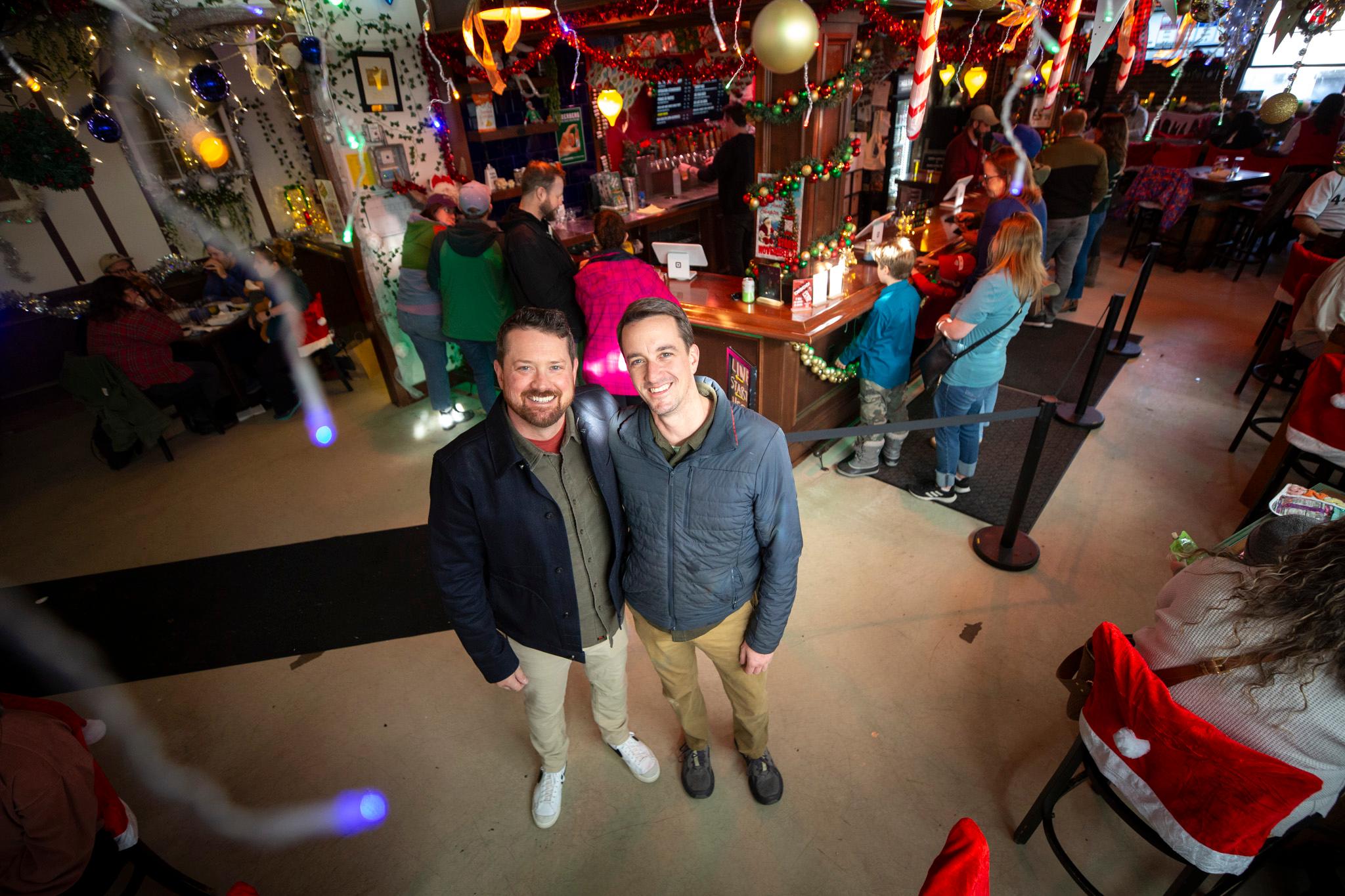Apples rained down around Barbara Masoner in the morning light as she shoved a long pole with metal fingers into a tree, shaking clusters of fruit free from their leafy home. This was neither orchard nor farm. It was a backyard in Lakewood and a crucial piece of her annual project to glean what she can for local food pantries.
“This is probably our last, because cold weather is moving in,” she said as more red gems plummeted onto the lawn.
Masoner is a longtime local food advocate. She and a collective of green-thumbs, under the name Grow Local Colorado, have been raising vegetables in Civic Center Park for more than a decade. Their harvests go to food pantries in the area. It’s part of an effort to ensure hungry residents have something fresh and clean to cook for their families. Four years ago, she began mining the metro area for more, and she found there was so much fruit ready to be picked around people’s homes.
For some context, Masoner told us the Civic Center gardens yielded 2,200 pounds of fresh food this year, a record. In 2021, she and about 25 volunteers hauled in 10,000 pounds of backyard fruit, though this year was tougher. A combination of late spring frosts and cold spells nicked fruit trees right as they blossomed.

“We’re at 2,900 [pounds],” she said during the season’s final gleaning, “and this will put us at 3,000. Which is still, you know – that’s good stuff.”
As Masoner and a few other volunteers shook branches for apples, others began sorting them. The best would go straight to distribution centers, like Metro Caring, which serve residents in need. Others, with some cosmetic damage, would be turned into apple sauce or cider, then donated. Everything else went to a compost pile which, in this case, was bound for a family of goats.
This has always been a welcome supply for local pantries, but it’s become more important in recent years.
When the world shut down at the beginning of the pandemic, the need for free and low-cost food skyrocketed. Almost immediately, some local pantries saw tenfold spikes in demand. Jessica Harper, Metro Caring’s manager of urban agriculture, told us this demand has continued to grow.
Meanwhile, supply chain issues related to the pandemic and, now, political instability across the world have pushed food prices higher. At this time last year, these forces were already making it difficult for food banks to maintain their regular supplies.
All of this, Masoner told us, has made the backyard gleaning even more necessary. A few years ago, distributors like Metro Caring could expect to get a lot of excess produce from grocery stores.
“That’s not so much the case anymore, plus also the costs [have] gone up,” she said. “Now people can’t afford to pay rent, pay utilities and pay for food. Food is the first thing that gets cut.”

While the U.S. government hasn’t tracked apples in the last few years, Consumer Price Index data show the price of oranges, nationally, has jumped about 20 percent since 2020 and the price of strawberries grew almost 15 percent. The cost of bananas also ticked up about 8 percent in the last two years, but it’s been pretty steady since 2012.

Harper said Metro Caring might have struggled to meet demand in the last few years if not for these hyper-local donations, and it’s helped them afford other groceries.
“The gleaning project also helps organizations like us free up funds to be more responsive to changing community need, because we know fresh fruit is coming our way,” she told us.
Plus, she added, Metro Caring’s shoppers want fresh produce, and it doesn’t get much fresher than straight off a tree.

Beyond community service, the gleaning project has created a place for friendship, verse and levity in a tough couple of years.
Masoner’s volunteers cackled as she dodged an apple sailing past her head. There can be bruising, both for fruit and foreheads in this work, but it’s part of the fun.
While everyone showed up because they want to help feed their neighbors, they’ve also continued to come back for the camaraderie.

Dana Miller, an activist who’s helped organize marches and rallies on a number of issues since 2016, said she’s reveled in the gleaning community, especially when they gather to press fruit into cider.
“The community, laughing, getting bonked in the head,” she said. “All that stuff. It’s so much fun.”

The communal harvesting has inspired a litany of poems from Joslyn Green. Masoner read one that Green stuffed in her mailbox recently, as she sorted through the bounty.
“From side-yard apples plucked, or apples picked in the company of others,” Green wrote, “gathered up and sorted – for some are bruised, worm-tracked, black-speckled, bitten – sorted, washed and quartered, pressed fresh of skin and seed and pulp, come buckets full of autumn essence, to be stored up in handled jugs against the low cloud tines, poured out and shared, gold brown, on winter-minded days of rudded snow.”
Want to join next year?
Masoner said to shoot an email to [email protected]. They could always use more volunteers.
What’s more? Shaking apple trees is a workout, and pretty fun! I found out firsthand:












